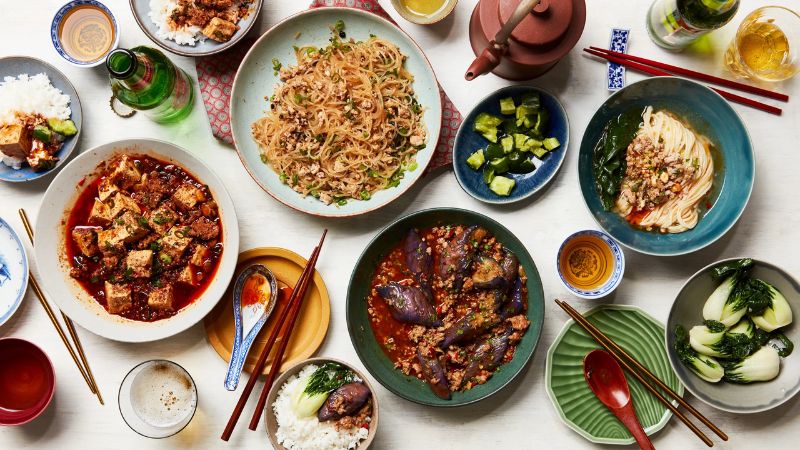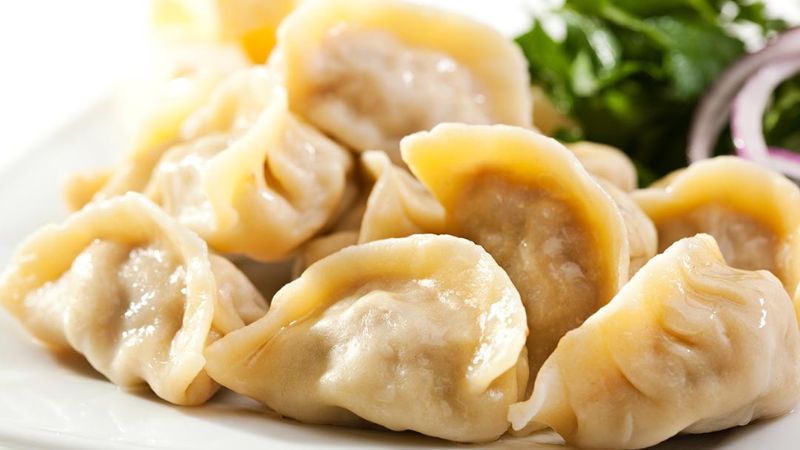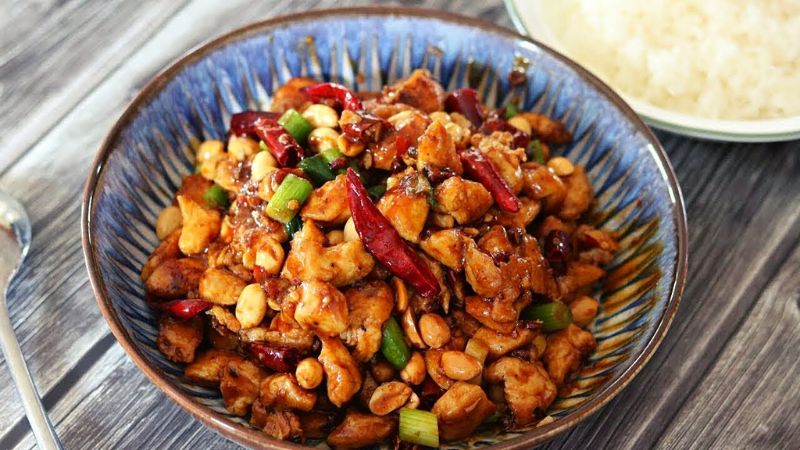
What is China Best Known for Food?
What Defines Chinese Cuisine?
Chinese food is more than just sustenance—it's a celebration of history, culture, and family. The concept of balance is crucial, blending flavors, textures, and ingredients in harmonious unity. From the crunchiness of stir-fried vegetables to the tenderness of slow-cooked meats, each element complements the other. In Chinese cuisine, balance is more than a culinary principle—it's an art.
China’s culinary landscape is as vast as its geography. From the spicy heat of Sichuan to the delicate flavors of Cantonese cuisine, the country's regional specialties add diversity to its food. This diversity is enhanced by centuries of techniques, ingredients, and philosophy, which have been carefully passed down through generations. Today, New China, one of the top restaurants offering authentic Chinese dishes, showcases this harmony in its menu, serving up traditional favorites with a contemporary twist.

The Influence of Geography on Chinese Cuisine
China’s geography has a profound impact on its food. Northern China, for example, has cold winters and dry summers, so the cuisine is dominated by wheat-based foods like noodles and dumplings. Southern China, with its lush, fertile lands, is known for rice cultivation, and the dishes reflect that, with rice being a staple food.
The coastal regions rely heavily on seafood, while inland areas focus more on meat and vegetables. In Sichuan, the mountainous terrain gave rise to spicy dishes seasoned with bold flavors like garlic, ginger, and Sichuan peppercorns. Meanwhile, Cantonese cuisine, popular in the south, is known for its lighter, more delicate flavors, often steaming or stir-frying ingredients to preserve their freshness.
New China, while located outside of China, mirrors this diverse geographic influence, allowing diners to travel through China with every bite.
Regional Varieties of Chinese Food
It’s impossible to talk about Chinese food without recognizing the regional differences. Four major culinary regions dominate the food scene, each offering unique flavors and techniques. Let's explore what each region is best known for and how New China seamlessly integrates these specialties into its menu.
Northern Cuisine: The Land of Noodles and Dumplings
In Northern China, where wheat is the primary crop, noodles, dumplings, and steamed buns dominate the table. A signature dish of this region is Beijing's Peking duck, a perfectly roasted duck with crispy skin, served with thin pancakes, hoisin sauce, and scallions.
Another northern classic is Jiaozi, or dumplings, which are stuffed with a variety of fillings such as pork, cabbage, or shrimp. These dumplings are typically enjoyed during Chinese New Year, symbolizing wealth and prosperity.
In New China, you’ll find these northern classics, with chefs crafting handmade dumplings and preparing crispy Peking duck with the same meticulous care you would find in the heart of Beijing.

Southern Cuisine: Light, Fresh, and Flavorful
Southern China is famed for its light, delicate flavors, often associated with Cantonese cuisine. This region emphasizes freshness, with seafood playing a significant role. Dim sum, a hallmark of Cantonese food, consists of small, bite-sized portions that are perfect for sharing.
Steamed dishes are popular here as well, with steamed fish being a delicacy due to its simplicity and the focus on the fish’s natural flavor. The balance between fresh ingredients and minimal seasoning allows the quality of the food to shine.
At New China, the focus on freshness is paramount, with dim sum platters offering a taste of southern China’s best bites, and delicate steamed seafood dishes that transport you directly to the southern provinces.
Eastern Cuisine: Where Sweet Meets Savory
In Eastern China, you'll find a beautiful fusion of sweet and savory flavors, particularly in Shanghai. One of the most famous dishes from this region is Xiao Long Bao, or soup dumplings, filled with minced pork and rich broth. The trick to enjoying these is to take a small bite, sip the broth, and then devour the dumpling in one bite.
Red-braised pork, another eastern classic, is slow-cooked in soy sauce and sugar, resulting in a sweet and savory delight that melts in your mouth.
At New China, these flavorful Xiao Long Bao are made fresh daily, and the rich, sweet-savory balance of red-braised pork brings a taste of Shanghai right to your plate.
Western Cuisine: Bold and Spicy
The food from western China, particularly Sichuan cuisine, is known for its bold, spicy flavors. The use of Sichuan peppercorns adds a unique numbing sensation to dishes like hotpot and Kung Pao chicken.
The distinctive feature of western food is its combination of chili heat with savory flavors, making every bite a flavorful explosion. The spiciness is balanced with cooling ingredients like tofu or cucumber, providing a dynamic and exciting eating experience.
New China is famous for its Sichuan hot pot, offering diners the chance to customize their spice level while enjoying the authentic flavors of western China.

Chinese Food and the Concept of Harmony
Beyond its regional specialties, Chinese food is about balance—both in flavor and health. The yin and yang philosophy of balancing cold and hot foods, or light and heavy ingredients, plays a significant role in everyday meals. For instance, a spicy dish may be paired with a cooling side to achieve equilibrium.
In many meals, ginger, garlic, and scallions are used not only for flavor but also for their health benefits. Traditional Chinese medicine often emphasizes the healing properties of food, making certain dishes more than just meals—they are also treatments.
New China integrates this philosophy into their dishes by providing balanced meals that not only taste great but also offer health benefits.
The Rise of Chinese Food Globally
Chinese cuisine has taken the world by storm. In nearly every corner of the globe, you’ll find Chinese restaurants, and New China is one of the most popular outside of China itself, blending tradition with modern culinary techniques.
Chinese food’s global rise is due to its adaptability. Dishes like fried rice, sweet and sour pork, and Kung Pao chicken have become staples in international Chinese restaurants, adjusted to local tastes while still retaining their essence.
Yet, New China remains committed to authenticity, offering traditional flavors that stay true to their origins, making them stand out in the global Chinese dining scene.
Conclusion
Chinese food, whether in China or at renowned restaurants like New China, offers a journey through centuries of history, culture, and flavor. Each dish, region, and cooking method tells a story—one of innovation, tradition, and balance. From the complex spices of Sichuan to the fresh delicacies of Cantonese cuisine, China's culinary world is as vast as it is delicious, promising something for every palate.


